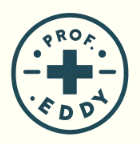Eight Constitution: The blueprint of my body
The essence of both Eight-Constitution Medicine (ECM) and Sasang Constitutional Medicine (SCM) lies in understanding what our bodies are inherently born with—the natural differences in the strength and function of internal organs. This article explores how each framework reveals our innate physiological blueprint, shedding light on how these systems interpret and manage health.
The Foundation: Inborn Constitutional Differences
According to both ECM and SCM, humans are not physiologically identical. Our internal organs—lungs, liver, spleen, and kidneys—carry varying energetic strengths from birth. These differences are not random but structured, and they influence our health, behavior, and response to treatment throughout life.
Organ Pairings: The Tug of War Within
Both traditions recognize antagonistic organ pairs:
- Lung (Metal) vs Liver (Wood)
- Spleen (Fire) vs Kidney (Water)
These pairings represent a dynamic balance. Absolute equality between the energies of each pair would paradoxically mean lifelessness, as organic systems must constantly adapt and shift. Everyone is born with slight but impactful imbalances between these opposing forces. This inherent imbalance forms the basis of one’s constitution.

Sasang Constitutional Medicine: The Broad Strokes
SCM, developed in the late 19th century by Yi Je-ma, simplifies constitutional classification into four types based on the dominant organ pair:
- Tae-Yang (太陽)
- Tae-Eum (太陰)
- So-Yang (少陽)
- So-Eum (少陰)
For example, if someone’s liver (Wood) is significantly stronger than their lungs (Metal), SCM would classify them as Tae-Eum (太陰). It doesn’t factor in the other organs as deeply—it’s a broad categorization based on the most pronounced difference.
Eight Constitution Medicine: A Detailed Map
ECM, introduced by Dr. Dowon Kuon, takes a deeper dive by evaluating the relative energies of all four main organs. The resulting eight constitutions are based on more nuanced hierarchies. If a child is born with the following energy strengths:
- Liver (10)
- Kidney (8)
- Spleen (6)
- Lung (5)
Then ECM would classify the child as a Hepatonia type, based on this full ranking.
Why This Matters: Constitutional Health Is Not a Trend
Understanding your constitution isn’t like learning your zodiac sign or MBTI type. It’s about recognizing how your body is wired from birth. This knowledge guides:
- Dietary choices
- Acupuncture protocols
- Herbal treatment selection
- Lifestyle alignment
And most importantly, it helps correct physiological imbalances that may lead to chronic illness if left unchecked.
Can You Change Your Constitution?
No. Your fundamental constitution is established in utero through genetic and prenatal environmental factors. What you can change is how well your organs function within that constitutional framework. In both SCM and ECM, treatment isn’t about altering your type—it’s about optimizing your inherent strengths and supporting your weaknesses. Health improves as the imbalance between organ energies narrows.
Why Deeper Understanding Matters
It’s easy to get lost in lists of symptoms or personality traits associated with each type. But the real power lies in grasping what “constitution” means: your unique, unchangeable physiological fingerprint. So next time you come across an article on the traits of a So-Yang (少陽) or Hepatonia person, remember: those traits stem from deep, measurable, and meaningful organ-level imbalances you were born with. Thank you for reading.
For the original Korean text, visit here.
If you’re curious about the basics of traditional Korean medicine and health, read the following article:
The Truth About 8 Constitution Medicine: A Revolutionary Healing Framework Explained
What Your Sleeping Position Says About Your Health
Learn Why Studying JangSang Medicine is Important.
Frequently Asked but Silly Questions (Foods Good for the Liver??)
